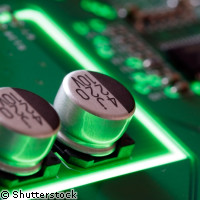New experiment offers insights into nanoscale systems
Using new optical technologies, an international team of researchers has been able to observe interactions in nanoscale systems. The findings of this new high-resolution laser spectroscopy experiment, conducted at the Centre of NanoScience at Ludwig-Maximilians-University (LMU) in Munich, Germany, have been published in the current issue of the renowned journal Nature. By measuring photons scattered from a single quantum dot, a semiconductor nanostructure, while increasing the laser intensity to saturate the dot's optical absorption, the scientists have been able to detect very weak interactions between the material and its surroundings for the first time thanks to the so-called Fano effect. This effect changes the way in which an atom or molecule absorbs light or radiation, explains Sasha Govorov, a theoretical physicist of Ohio University and co-author of the study. It occurs when a discrete quantum state - an atom or a molecule - interacts with a continuum state of the vacuum or the host material surrounding it. Frequently, the Heisenberg uncertainty principle will inhibit the observation of the Fano effect in nanoscale systems, so that interaction between the system and its surroundings cannot be observed. The principle is a concept in quantum physics that says that the more precisely the position of a particle is given, the less precisely one can say what its momentum is and vice versa. Given the small scale of the system, it is impossible to precisely determine both factors at the same time. 'Our theory suggests that the nonlinear Fano effect and the method associated with it can be potentially applied to a variety of physical systems to reveal weak interactions,' says Mr Govorov. 'We can explore new frontiers in quantum optics,' LMU Professor Khaled Karrai adds. The study was funded by various national organisations from Germany, the UK and the USA, as well as the EU as part of the SANDiE (Self-Assembled semiconductor Nanostructures for new Devices in photonics and Electronics) Network of Excellence, which receives a total of €9.2 million under the Sixth Framework Programme (FP6). SANDie, a network uniting 32 partners from 14 countries inside and outside the EU, tries to form a cohesive approach to research in the field of self-assembled semiconductor nanostructures (SAN). SAN such as self-assembled quantum dots (QDs), which form spontaneously under specific circumstances when semiconductor material is deposited on a substrate in a few layers, are believed to offer a way of shrinking electronic devices ever further while keeping fabrication costs in check.



